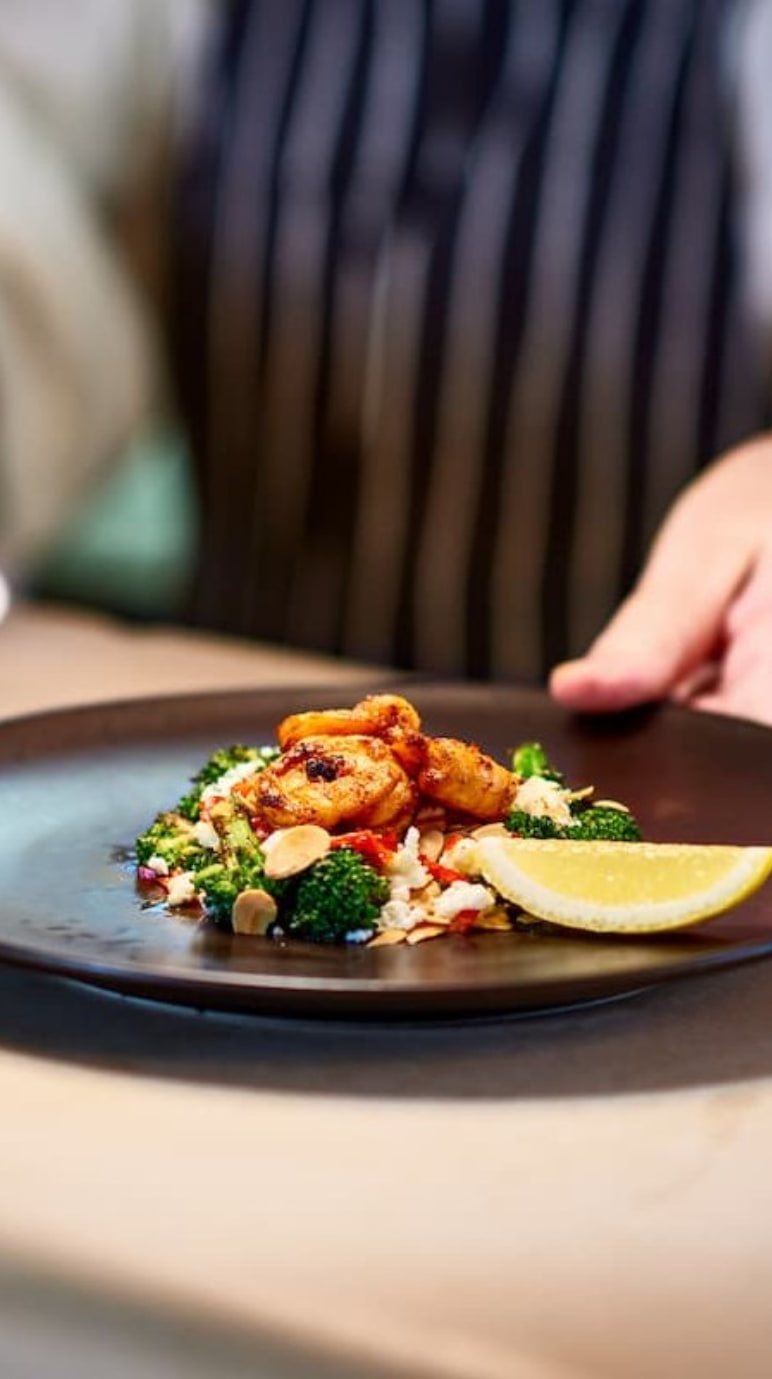
Imagine every bite as a masterpiece, every moment a ceremony. Welcome to fine dining – where meticulous detail, exquisite presentation, and impeccable service create unforgettable experiences. Beyond exceptional cuisine, fine dining offers sophisticated ambiance and elegant surroundings, turning meals into memorable occasions. Discover what defines fine dining and how to launch a career in the high-end restaurant scene.
Initial characteristics of fine dining restaurants
High-end culinary options offer more than just a meal; they provide an immersive experience that combines exquisite food, impeccable service and an elegant ambiance. Let’s look at some of the things guests will notice first about fine dining establishments.
Ambiance and decor
Environment plays a central role in fine dining. These restaurants are often designed to evoke a sense of luxury and sophistication, with tasteful decor, elegant furnishings and ambient lighting that creates a refined atmosphere.
Attention is paid to every detail, from the choice of crisp tablecloths and linen napkins to the artwork on the walls, ensuring guests feel transported to a world of elegance from the moment they step inside.
Dress code
Maintaining a formal standard for attire and observing etiquette standards are common in fine dining restaurants. Guests are typically expected to dress in business casual or formal attire, contributing to the sense of occasion and respect for the dining experience.
Etiquette expectations include behavior at the table, such as using utensils correctly, engaging in polite conversation and respecting other diners’ space.
Culinary reputation and recognition
Fine dining restaurants often garner acclaim for their gastronomic excellence. Awards, accolades and positive reviews contribute to their reputation as destinations for exceptional dining experiences.
This helps interest more distinguished guests and also makes the meal feel more special to diners.
Quality of ingredients and uniqueness of menu
At the heart of fine dining is the standard of each dish and the distinctiveness of the menu. Chefs in these establishments source the finest seasonal ingredients, often locally and sustainably sourced, to create dishes that are delicious and demonstrate creativity and innovation.
Menus are often carefully curated to offer a blend of classic dishes with modern twists, ensuring each meal is a memorable culinary experience.
Types of menus
High-end restaurants typically offer a variety of dining selections to cater to different preferences and occasions, including:
- Prix fixe menu: a set selection offering a fixed number of courses for a set price. Prix fixe menus showcase the chef’s specialties and seasonal ingredients, providing a curated culinary experience from appetizers to dessert
- A la carte menu: dishes are ordered individually, allowing guests to customize their dining experience by selecting dishes based on personal preferences
- Tasting menu: multi-courses are chosen by the chef, highlighting a progression of flavors and techniques. Tasting menus often feature smaller portions of several dishes, providing an opportunity for guests to sample a variety of flavors and culinary innovations in one sitting
Signature dishes and culinary innovations in fine dining
High-end establishments are renowned for their trademark creations crafted with precision and creativity. These iconic dishes define the restaurant’s culinary identity and showcase the chef’s expertise.
They often highlight local ingredients, new cooking techniques and artistic presentation.
Fine dining chefs are pioneers in culinary innovation, constantly pushing boundaries to create new and exciting flavors and textures.
This may include molecular gastronomy techniques, fusion cuisines that blend cultural influences or sustainability practices that emphasize ethical sourcing and minimal food waste.
Level of service and attention to detail
Fine dining restaurants also focus on professionalism and attentiveness. From the warm welcome at the door to the knowledgeable recommendations from the sommelier, every service interaction is orchestrated to improve the dining experience.
Servers are trained to anticipate guests’ needs, ensuring every aspect of their visit is flawlessly executed.
The role of the maitre d’ and staff in improving experience
At the helm of fine dining service is the head waiter who oversees the dining room, ensuring an elegant experience for guests. Their responsibilities include greeting guests, managing reservations and orchestrating the flow of service. The waitstaff, trained extensively in hospitality and etiquette, plays a key role in delivering impeccable service.
They are attentive to guests’ needs, knowledgeable about the menu and skilled in anticipating and fulfilling requests with grace and professionalism.
Understanding the table service protocol
This includes techniques such as synchronized serving, where multiple servers present and place dishes simultaneously, ensuring each guest receives their meal promptly.
The service is choreographed to maintain a rhythm that respects guests’ pace while maintaining an unobtrusive presence.
The importance of sommeliers in fine dining
Integral to the gourmet experience, sommeliers offer expert guidance on wine selection and pairings. They have extensive knowledge of wine regions, varietals and vintages, allowing them to curate a wine list that complements the menu and boosts the flavors of the dishes.
Sommeliers engage with guests to understand their preferences and recommend wines that improve their dining experience.
Comparison of dining experiences
Eating out offers a wide range of options, each tailored to different preferences, occasions and lifestyles. Whether seeking a luxurious culinary experience, a quick and convenient meal or something in between, guests can find a wide range of options to cater to every taste.
Let’s look at how fine dining compares to some of the other choices on offer.
Fine dining vs. fast food
These are polar opposites in the dining spectrum. Fine dining prioritizes a sophisticated, refined dining experience characterized by gourmet dishes prepared with high-quality ingredients. In comparison, fast food offers convenience and speed, with a focus on quick service, affordability and standardized menu items.
Fast food restaurants cater to on-the-go customers looking for quick meals at reasonable prices, often enjoyed in a casual, self-serve environment. They usually don’t have table service, with most of the staff working behind a counter to take orders and hand over food.
Fine dining vs. fast casual
While higher quality than above, this dining option is still laid back and relaxed. Fast casual restaurants serve freshly prepared meals made to order, using higher-quality ingredients than traditional fast food.
Guests still typically order at a counter and receive their food quickly, enjoying it in an informal setting that bridges the gap between fast food and full-service dining.
Fine dining vs. casual dining
In contrast to high-end restaurants, this option focuses on a relaxed, informal setting where comfort and affordability are key. Menus in casual dining restaurants offer a wide variety of dishes at moderate prices, served in a more laid-back environment without the formality or elaborate presentation associated with fine dining.
This usually means there is no dress code and no set menu options. Most casual dining establishments offer table service, but the service is not as personalized and attentive as in fine dining.






